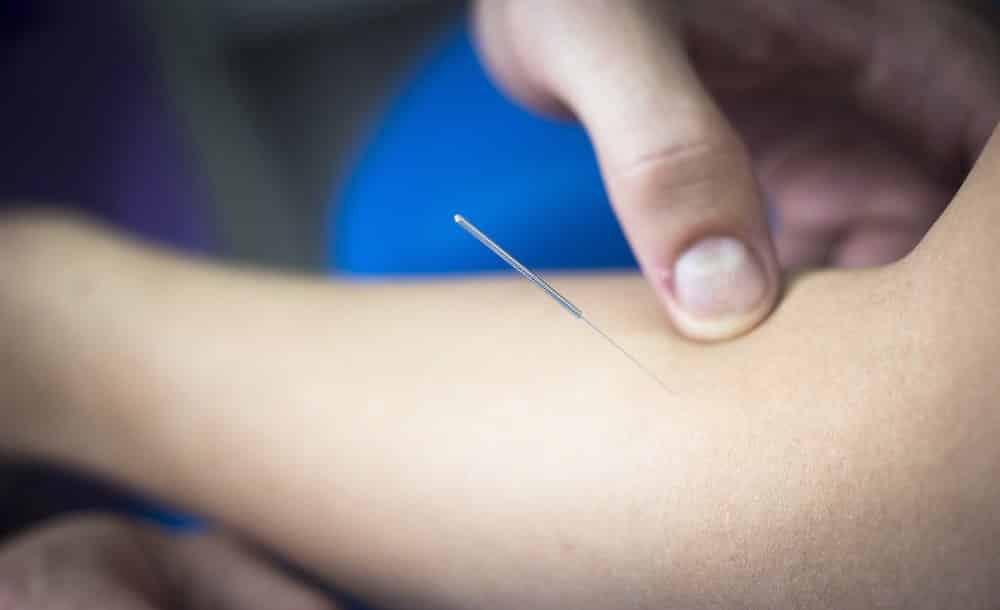Dry needling is a procedure in which a solid filament needle is inserted into the skin and muscle directly at a myofascial trigger point. A myofascial trigger point consists of multiple contractions or knots, which are related to the production and maintenance of the pain cycle. Dry needling can be used to treat a variety of musculoskeletal problems. Dry needling of the muscles has a profound effect on reducing the pain mechanisms that are relayed by the nervous system.

Safe and effective
The needles are very fine so the procedure is virtually painless
Used in the treatment of musculoskeletal problems like painful and tight muscles
Can be used in the treatment of common complaints like tennis and golfers elbow
Single use needles are used for hygiene reasons
Dry needling of the muscles has a profound effect on reducing the pain mechanisms that are relayed by the nervous system
HOW IS IT DIFFERENT TO ACUPUNCTURE?
There are many similarities and differences between dry needling and acupuncture. Both use a sterilised fine filament needle to insert in to certain points in the body. In traditional acupuncture, the needles are not necessarily placed into trigger points, but rather points along energy channels in the body. These ‘meridians’ or energy channels follow an eastern philosophy. Dry needling comes from a more structural background where the needles are placed directly in to shortened or dysfunctional muscles.
WHAT TYPES OF PROBLEMS CAN BE TREATED WITH DRY NEEDLING?
Dry needling can be used to treat a variety of musculoskeletal problems. Dry needling of the muscles has a profound effect on reducing the pain mechanisms that are relayed by the nervous system. Muscle problems are thought to be a contributing factor to many conditions. Such conditions include, but are not limited to neck, back, shoulder, arm pain (tennis elbow, carpal tunnel, golfer’s elbow), migraine and tension-type headaches, buttock pain and leg pain (sciatica, hamstring strains, calf tightness/spasms).
HOW DOES DRY NEEDLING WORK?
Dry needling targets trigger points in muscles. A trigger point is a hypersensitive region within a muscle (like those tender ‘knots’ or lumps that you can feel when you are stressed). When the needle is inserted into the trigger point, it acts to ‘jump start’ the muscle and its nerve supply. This usually results in a reflexive relaxation of the muscle causing pain relief and tissue lengthening.
IS THE PROCEDURE PAINFUL?
The needles are very fine, and you barely feel them go in. Once the needle is in, people sometimes feel some aching; others feel not much at all. On occasion the needle may cause a small muscle twitch, which is a great sign that the needling will have a positive effect on relaxing the muscle. Some people feel better straight away, others feel better a day or two later.
It is a good idea to drink plenty of water, and rest if tired. If you are used to the needling, it should be fine to continue your normal sport that day, but after your first time, you may choose to take a day off.
